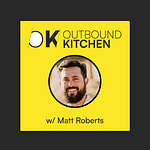Listen now on Spotify, YouTube, and Apple.
P.S. Didn’t catch Part 1? Listen here.
Chef specials:
Internal AI use cases outperform external automation
In-office teams show 20-60% better performance metrics
Their outbound growth plans
In this 2nd conversation, Kyle Norton, CRO at Owner.com, shares deep insights on AI implementation in sales, the shift to in-office work, and strategic annual planning.
He discusses how his team leverages AI for internal processes rather than external automation, achieving remarkable results with tools like Avara for sales simulation and Momentum for CRM automation.
Kyle reveals compelling data showing 20-40% faster ramp times and up to 60% higher activity rates for in-office teams, leading to Owner.com's recent office opening in Toronto.
---
Who is Kyle Norton?
CRO of Owner.com
Host of the Revenue Leadership podcast (Pavilion Podcast)
More context about the Owner's Sales team:
ACV: $5.5k
Sales Cycle Length: 4-7 days
Vertical SaaS: Restaurant industry
Buyer personas: Restaurant owners
Markets: North America
Some takeaways:
AI use cases
Internal AI implementation outperforms external AI automation - 95% of AI SDR implementations are "crap" while internal use cases like sales simulation and CRM automation show remarkable results.
AI SDRs are a race to the bottom - most implementations are just carpet bombing markets for short-term gains while destroying long-term brand value.
In-office vs remote sales teams
In-office teams demonstrate 20-40% faster ramp times and up to 60% higher activity rates compared to remote teams - challenging the remote-first narrative in sales.
The remote work "success stories" during COVID might have been misleading - companies that rushed back to office first were often those who failed at remote, masking the real performance gap.
The best remote-first companies are actually the last to return to office - because their remote infrastructure was strong enough to mask the performance gap.
Other takeaways
Environmental design trumps willpower - strategic dashboard placement drove 80% of activities into tier-A accounts without management intervention.
Management capacity, not market size, is the real limiting factor in sales team scaling - even with 300,000 potential customers, you can't give a green manager 9 reps.
Book-to-show rates are more about environmental design than rep discipline - systematic nudges outperform willpower.
Senior leadership hiring delays can be more costly than burn rate concerns - waiting to hire key leaders like VP Sales and enablement heads significantly impacts growth trajectory.
---
Connect with Kyle:
Chapters
00:00 - Kyle Norton
01:12 The Pitfalls of AI SDRs
02:30 Successful AI SDR Strategies
06:40 Internal AI Use Cases
07:22 AI-Powered CRM and Momentum
09:18 AI Simulators and Training
18:35 Annual Planning and Outbound Strategy
24:23 Solving Problems as Revenue Leaders
24:52 Improving Book to Show Rates
28:14 Building Effective Habits
28:36 Nudge Theory in Sales
31:22 Hiring and Management Strategies
34:55 Remote vs. In-Office Sales Teams
42:37 Field Reps and Efficiency
44:09 Reflections and Future Plans













